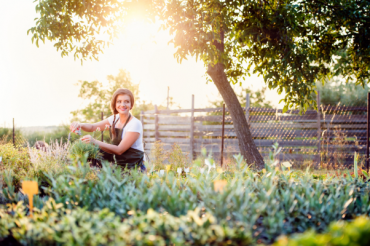When you’re lucky enough to live in a country like Australia, where wildlife is very much in abundance, it’s not so difficult to open up your world and let it in. Most homeowners have a garden, even if it’s on the small side, and it represents a great opportunity to get up close and personal with nature.
However, if you want to commune with the birds and the bees, your garden needs to be a safe haven. Eliminating the use of pesticides (particularly if you’re a veggie grower) can be tough at first, but it leads to big rewards. The flowers may need a little more work, but they’ll grow just as tall and bright. Plus, you’ll find yourself playing host to a diverse assortment of critters and creatures.
Keep reading for some handy hints and tips on how to build a beautiful eco-friendly garden.
Recycle Your Water
These days, it is relatively easy to find high-quality irrigation equipment. For instance, the Irrigation Supplies by Sunshower Online are designed to cater to every kind of garden, whether you want to grow vegetables, herbs, flowers, or perennials. It is also worth considering a more unconventional method and recycling your greywater (from laundry cycles and rainfall containers).
Give Up the Chemicals
This the hardest challenge of all for gardeners who have only ever raised plants with the use of pesticides. Yet, the thing to remember about these chemicals is that they don’t fix the problem. As soon as you stop applying them, the munching bugs return. What is ironic is the fact that they also kill off the ‘good’ bugs, which are the only things which can consistently and successfully control the poulations.
Start a Compost Heap
Maintaining a compost heap is one of the easiest (and cheapest) forms of eco-friendly gardening. All you need is a large container with a lid which is heavy enough to stop mice and other scavengers from getting in. Then, you just throw your organic kitchen and garden waste directly onto the pile. This stops it from ending up in a landfill and, eventually, it will produce a lovely, rich fertiliser for the garden.
Plant for Pollinators
Now that you’ve come around to the idea of inviting the good insects in, you need to find a way to attract and appeal to them. You can do this by planting the species that they love the most. Do some research and find out which flowers your favourite insects go crazy for. Make sure that you accommodate the bees, because there is no better pollinator of the garden.
Opt for Local Species
The more familiar your plants are with the climate and environment, the easier they will find it to thrive. Consequently, they won’t end up needing as much watering and attention as non-native species. This is a useful trick to remember when you’re shopping for your summer flower beds. Native, endemic, and local plants are the most eco-friendly way to garden.
Sideline the Turf
There are lots of gardeners who inwardly scream and curse at unruly lawns; who wish that there was a better, easier way to maintain that flawless garden aesthetic. Well, the wish has been granted, because crawlers, creepers, and ground covers are hugely popular right now. They eat space normally used for a traditional lawn, but they require a fraction of the maintenance and care. They also use significantly less water, which makes them very green.
Why a Little Change Can Have a Big Impact
It takes barely any work at all to convert a garden into an eco-friendly paradise. In fact, the whole point of sustainable gardening is that you move away from intensive techniques. The end result may be a little more rugged and rough, but that’s how you know it is working. Nature doesn’t create in straight lines and your garden has the power to be just as wild and wonderful.

























































Comments